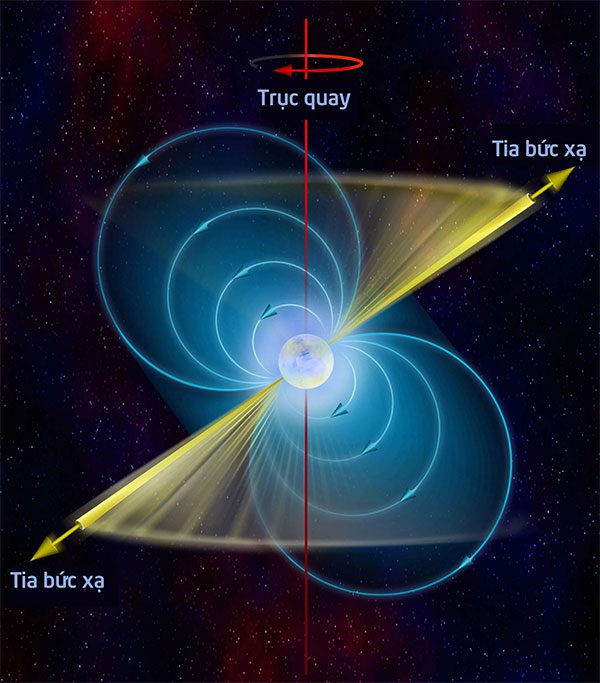According to SCMP, China is preparing to build the world’s largest radio telescope, with a dish diameter of up to 120 meters. The purpose of this telescope is to enable highly accurate time tracking, as well as to serve as a modern tool for fundamental research.
The Jingdong Radio Telescope (JRT), valued at 350 million yuan (48 million USD), will be located in the mountainous region of Yunnan Province, southern China. It is expected that the JRT will become operational in 2026 and will measure time by tracking the regular radio pulses emitted by pulsars – rapidly rotating neutron stars considered the most accurate clocks in the universe.
Pulsars are very dense neutron stars formed when massive stars “die” at the end of their life cycle. According to NASA, a spoonful of pulsar material on Earth would weigh as much as a mountain. As pulsars rotate, their beams of radiation sweep across Earth like a lighthouse. Due to their unique properties, they have a very stable rotation period, making them useful tools for scientists.

Together with the Five-hundred-meter Aperture Spherical Telescope (FAST), known as Heavenly Eye, in Guizhou Province, the Jingdong telescope will help China develop a time measurement tool based on pulsar activity that is more independent and precise than the International Atomic Time (TAI) used worldwide, according to Wang Ming, a scientist on the project.
Mr. Wang stated that this project will also enhance China’s leading position in the field of radio astronomy and provide positioning and navigation capabilities based on pulsars for Chinese spacecraft in future space exploration.
The scientist added that the idea of building a large radio telescope specifically for pulsar research was first conceived in 2013. After years of research, Wang and his colleagues found the location for the telescope in Jingdong County. At an altitude of 2,500 meters above sea level, the Ailao Mountain Nature Reserve in Jingdong is almost free from noise.
The radio telescope allows astronomers to observe space in a unique way. Specifically, the JRT can observe around 3,000 pulsars—hundreds more than similar-sized telescopes, such as the Effelsberg Telescope in Germany and the Green Bank Telescope in the United States.

Heavenly Eye Telescope.
Wang mentioned that the team’s plan is to observe more than 100 pulsars per millisecond, with some pulsars rotating hundreds of times per second. Subsequently, scientists will select 80 of the most stable “candidates” to create a network, while measuring and comparing the timing of these pulsars.
The goal of this project is to improve time tracking on Earth. While TAI operates based on around 400 highly accurate atomic clocks, this system will have a long-term competitive advantage because neutron stars can rotate with extreme stability for decades, if not longer.
So far, scientists have utilized 18 pulsars and 5 radio telescopes located across Europe to demonstrate that these systems work effectively.
Mr. Wang stated that China’s system will include three giant telescopes: JRT, the Qidai Radio Telescope currently under construction in Xinjiang, and the Heavenly Eye Telescope in Guizhou.

Model of the Qidai Telescope.
Additionally, this system will also help detect gravitational waves—created when supermassive black holes merge in the early universe, producing low-frequency radio waves that distort the fabric of spacetime as they propagate. When such waves pass through Earth, causing slight positional changes, a series of pulsars can detect that shift if they are accurate enough.
Meanwhile, Wang also mentioned that designers will face significant structural challenges in constructing the JRT, which will weigh up to 3,400 tons. Other critical technologies being used include the design and development of ultra-wideband feed systems and low-noise receivers that the team has been working on since 2020.
Building the telescope will strengthen China’s position in large-scale machinery design, automation control, low-temperature electronics, and system integration, according to Mr. Wang. He also hopes to complete the construction soon and share observational data with the scientific community.





















































